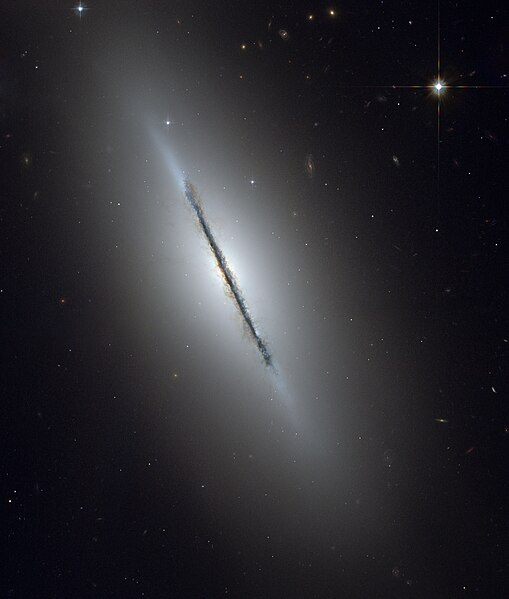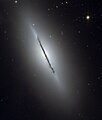Файл:Ngc5866 hst big.jpg — Википедия

Размер этого предпросмотра: 509 × 599 пкс. Другие разрешения: 204 × 240 пкс | 408 × 480 пкс | 652 × 768 пкс | 870 × 1024 пкс | 1739 × 2048 пкс | 3190 × 3756 пкс.
Исходный файл (3190 × 3756 пкс, размер файла: 11,45 МБ, MIME-тип: image/jpeg)
История файла
Нажмите на дату/время, чтобы посмотреть файл, который был загружен в тот момент.
| Дата/время | Миниатюра | Размеры | Участник | Примечание | |
|---|---|---|---|---|---|
| текущий | 19:07, 29 июля 2009 |  | 3190 × 3756 (11,45 МБ) | Tryphon | Better quality, from http://imgsrc.hubblesite.org/hu/db/images/hs-2006-24-a-full_jpg.jpg. |
| 17:49, 16 февраля 2009 |  | 3190 × 3756 (879 КБ) | Spencer | Much higher res | |
| 22:29, 26 марта 2007 |  | 1280 × 1507 (1,38 МБ) | Barfoo2 | == Summary == From original NASA press release: :This is a unique view of the disk galaxy NGC 5866 tilted nearly edge-on to our line-of-sight. Hubble's sharp vision reveals a crisp dust lane dividing the galaxy into two hal |
Использование файла
Следующие 3 страницы используют этот файл:
Глобальное использование файла
Данный файл используется в следующих вики:
- Использование в ast.wikipedia.org
- Использование в be.wikipedia.org
- Использование в ca.wikipedia.org
- Использование в cs.wikipedia.org
- Использование в de.wikipedia.org
- Использование в el.wikipedia.org
- Использование в en.wikipedia.org
- Использование в en.wikibooks.org
- Использование в eo.wikipedia.org
- Использование в es.wikipedia.org
- Использование в eu.wikipedia.org
- Использование в fi.wikipedia.org
- Использование в fr.wikipedia.org
- Dragon (constellation)
- Galaxie
- Utilisateur:Itzcoalt
- Modèle:Utilisateur mystère
- Catégorie:Utilisateur Mystère
- Utilisateur:Patrinet/Galerie Utilisateur
- Utilisateur:Corle1nes
- Utilisateur:Célestin Moreau/Galaxies
- Utilisateur:Nicolas ANCEAU/Bibliothèque
- Utilisateur:Caro L
- Utilisateur:Viatcheslav
- Utilisateur:Silassouille
- Utilisateur:Chappa'ai7
- Utilisatrice:MamzellTopi
- Использование в he.wikipedia.org
- Использование в hr.wikipedia.org
- Использование в hu.wikipedia.org
- Использование в hy.wikipedia.org
- Использование в id.wikipedia.org
- Использование в it.wikipedia.org
- Использование в ja.wikipedia.org
- Использование в kk.wikipedia.org
Просмотреть глобальное использование этого файла.


 French
French Deutsch
Deutsch